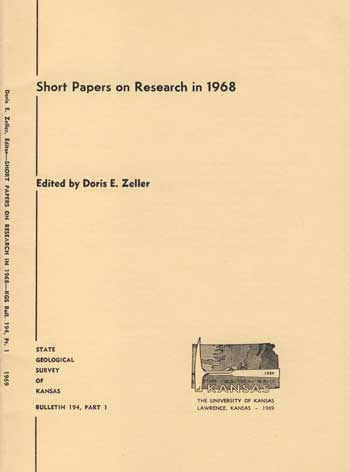
Kansas Geological Survey, Bulletin 194, pt. 1, originally published in 1969

Originally published in 1969 as part of "Short Papers on Research in 1968," Kansas Geological Survey Bulletin 194, part 1, p. 15-16. This is, in general, the original text as published. The information has not been updated.
Thermal expansion values of Kansas volcanic ash range from 4.05 to 4.6 × 10-6/C° (100-650°C), varying with chemical composition. The softening point is above 900°C.
Substitution of volcanic ash for other silicate fluxes in a ceramic body lowers the thermal expansion of the body, often to such an extent that a new glaze has to be prepared to prevent crazing. For a more knowledgeable approach to the use of volcanic ash in bodies and glazes, the thermal expansion of three volcanic ashes were measured: two samples of Pearlette ash of Pleistocene age (MEV-5 from Meade County and JV-6 from Jewell County) and the Calvert ash of Pliocene age (NNV-1 from Norton County). Chemical analyses are given in Table 1.
Thermal expansion test bars were prepared as follows:
Table 1--Chemical analyses.
| MEV-5, Meade County | JV-6, Jewell County | NNV-1, Norton County | |
|---|---|---|---|
| SiO2 | 72.40 | 73.32 | 76.68 |
| Al2O3 | 11.45 | 10.76 | 9.77 |
| Fe2O3 | 1.70 | 1.66 | 1.44 |
| TiO2 | 0.31 | 1.36 | 0.51 |
| CaO | 0.76 | 0.53 | 1.45 |
| MgO | 0.31 | 0.23 | 0.27 |
| K2O | 8.17 | 7.57 | 6.86 |
| Na2O | |||
| L.O.I. | 4.90 | 3.93 | 3.02 |
| L.O.I. = Loss on ignition. | |||
Thermal expansion curves are shown in Figure 1. From the curves the following observations can be made: (1) Thermal expansion is linear between 100 and 650°C, ranging from 4.05 to 4.65 × 10-6; (2) above 650° there is an increase in the rate of thermal expansion; (3) the softening point of volcanic ash glass is above 900°C as indicated by the reversal of the expansion curve; and (4) chemical composition controls the thermal expansion, but which oxide is the more important cannot be deduced from these measurements, as there undoubtedly is an interaction. One could say that the thermal expansion decreases with increasing silica content, increases with increasing alumina content, or increases with increasing alkali oxide content.
Figure 1--Linear thermal expansion curves for three samples of volcanic ash from Kansas. MEV-5 is from Meade County; JV-6 is from Jewell County; NNV-1 is from Norton County.

Bauleke, M. P., and Edmonds, C. S., 1968, Thermal expansion of siliceous Kansas clays (Dakota Formation): Kansas Geol. Survey Bull. 191, pt. 1, p. 13-15.
Kansas Geological Survey, Short Papers on Research in 1968
Placed on web July 26, 2011; originally published in Feb. 1969.
Comments to webadmin@kgs.ku.edu
The URL for this page is http://www.kgs.ku.edu/Publications/Bulletins/194_1D/index.html